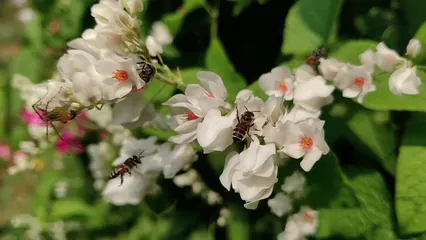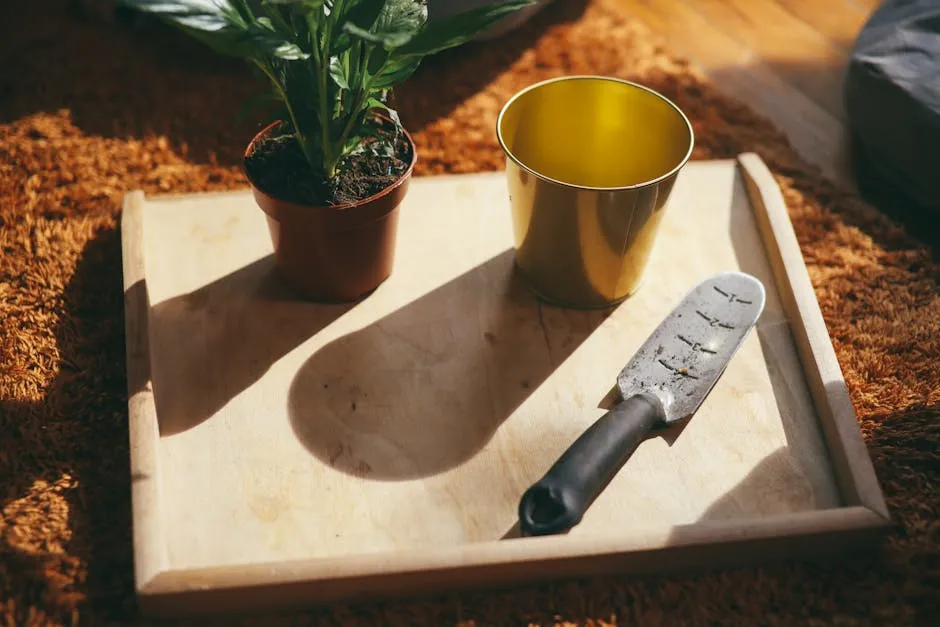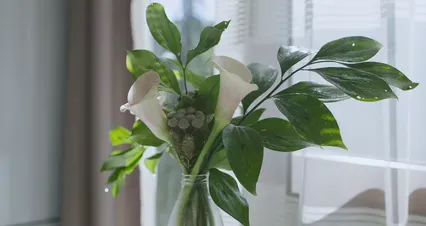

The Colorful World of Wild Flowers: Nature’s Vibrant Palette
Introduction
In a world dominated by concrete jungles and digital screens, the enchanting realm of wild flowers offers a refreshing escape. These unassuming blooms thrive in the wild, showcasing nature’s artistry in vibrant colors and diverse forms. From the delicate petals of the common poppy to the robust beauty of the Southern marsh orchid, wild flowers are not just a feast for the eyes; they play a crucial role in our ecosystem.
Whether you’re a seasoned botanist or simply someone who admires nature’s handiwork, understanding the world of wild flowers enriches our appreciation for biodiversity. These resilient plants can adapt to various environments, from meadows to rocky hillsides. They often flourish in places where cultivated flowers might struggle, proving that nature knows a thing or two about survival.
Wild flowers also provide essential resources for pollinators like bees and butterflies. They offer nectar and pollen, fueling these tiny heroes of the ecosystem. Without wild flowers, we could face a severe decline in these vital pollinator populations, jeopardizing our food supply.
In this blog post, we’ll explore the captivating universe of wild flowers, their ecological significance, how to cultivate them, and the best ways to enjoy their beauty. So, prepare to embark on a colorful journey that celebrates the wild side of nature! Get ready to be inspired by the stunning array of species, each with its unique charm and ecological role. From the common daisy flourishing in lawns to the rare Chiltern gentian hiding in rocky outcrops, wild flowers remind us of the beauty and diversity that nature has to offer.

So, grab your sun hat and a camera! Together, let’s uncover the secrets of the wild flower kingdom and learn how to bring a touch of this natural beauty into our own gardens and lives. And while you’re at it, don’t forget to equip yourself with the right tools! A good pair of gardening gloves can save your hands from the rough and tumble of dirt digging!
What Are Wild Flowers?
Wild flowers are nature’s unsung heroes. They grow freely in various habitats, from meadows to forests, showcasing an impressive variety. Unlike cultivated plants, these flowers thrive without human intervention. They come in all shapes and sizes, flaunting colors that range from the soft pastels of the common daisy to the vibrant hues of the Chiltern Gentian.
These beauties play a vital role in our ecosystems. Wild flowers provide essential nectar and pollen for pollinators like bees, butterflies, and hummingbirds. They support local wildlife by offering food and shelter, forming a crucial link in the food chain. Without them, the balance of nature could tip, leading to declines in pollinator populations and, by extension, our food supplies.
Among the most notable species are the Frog Orchid, known for its peculiar shape and rarity, and the Southern Marsh Orchid, which thrives in damp meadows. The Common Poppy captures hearts with its striking red petals, while the Chiltern Gentian stands out for its stunning blue flowers. Each species has unique adaptations that enable it to survive and flourish in its environment, reinforcing the idea that every flower has its place in the grand tapestry of nature.
Understanding wild flowers enriches our appreciation of biodiversity. By learning about their characteristics and ecological roles, we can better appreciate their beauty and significance. Plus, knowing about these flowers can inspire us to create our own wild flower gardens, contributing to local ecosystems right in our backyards. So, let’s give a round of applause to wild flowers and all they do for our planet!

Ecological Significance
Pollinators and Biodiversity
Wild flowers are nature’s buffet for pollinators. Bees, butterflies, and other critters flock to these blooms. They sip nectar, gather pollen, and play a crucial role in our ecosystem. The relationship is symbiotic; as pollinators feed, they help wild flowers reproduce. This dance of life keeps our environment buzzing with activity.
But that’s not all! Wild flowers also bolster biodiversity. They serve as habitats for various insects, birds, and small mammals. By providing food and shelter, they contribute to a rich web of life. Biodiversity is vital; it enhances ecosystem resilience. A diverse environment can better withstand diseases and climate changes. Each wild flower species contributes uniquely to this balance, ensuring that no corner of nature is left barren.
The loss of wild flowers can trigger a domino effect. Fewer blooms mean less food for pollinators. This decline can lead to decreased pollinator populations, which ultimately affects plant reproduction, including crops. In short, wild flowers are the unsung heroes of our ecosystem, quietly supporting life while adding color to our landscapes. Learn more about how to enhance biodiversity in your garden for insect support.

Natural Habitats
Wild flowers thrive in various habitats, showcasing their adaptability. From sunny meadows to shaded forests, these plants can make their homes almost anywhere. They flourish in rocky terrains, marshy grounds, and even along roadsides. Each habitat offers a unique set of conditions, allowing different species to thrive.
However, habitat loss poses a significant threat to wild flower populations. Urban development, farming, and climate change are wiping out these precious environments. When wild flowers lose their homes, they face extinction. This loss doesn’t just affect the flowers; it impacts entire ecosystems. Without their presence, many pollinators and other wildlife struggle to survive.
Conservation efforts focus on protecting natural habitats to preserve wild flowers. Restoring these areas can help revitalize ecosystems. By planting native wild flowers, we can make a difference. Every little effort counts in the fight against habitat loss. Together, we can ensure that wild flowers continue to grace our landscapes for generations to come. And if you’re looking to attract those pollinators, consider adding a bee hotel to your garden!

Common Species of Wild Flowers
Notable Wild Flower Species
- Frog Orchid: This rare gem has a unique appearance. With its tiny, frog-like flowers, it thrives in grasslands and woodlands. Its habitat preference makes it a delicate beauty, often found in areas with rich soil and partial shade.
- Southern Marsh Orchid: Known for its vibrant purple blooms, this orchid is a common sight in wet meadows. It plays a crucial role in its ecosystem, providing food for various pollinators while adding a splash of color to the landscape.
- Common Poppy: The iconic red petals of the Common Poppy have captured hearts for centuries. Not only is it a symbol of remembrance, but it also has culinary uses. Its seeds are often used in baking and cooking, showcasing its cultural significance.
- Chiltern Gentian: This striking blue flower thrives in chalky soils. It’s known for its unique trumpet-shaped blooms and is often found in grasslands. The Chiltern Gentian is a rare sight, making it a treasure for wild flower enthusiasts.

Lesser-Known Species
Meet some of the lesser-known wild flowers that contribute to our ecosystem. Vervain is a small yet mighty plant, attracting bees and butterflies. Its tiny purple flowers are often overlooked. Hairy Violet offers delicate beauty with its soft petals, providing nectar for early pollinators. Common Cow-Wheat is another unsung hero. It may not be glamorous, but it plays a vital role in supporting local wildlife.
These species, while lesser-known, have unique characteristics. They help maintain the balance in their environments. By planting a variety of wild flowers, you create a haven for pollinators and a vibrant tapestry of colors in your garden. Embrace the diversity, and celebrate the charm of all wild flowers, big and small! And don’t forget to keep track of your gardening journey with a garden journal!

Cultivating Wild Flowers
Starting a Wild Flower Garden
Creating a wild flower garden is like hosting a party for nature. But before you send out invitations, choose the right guests! Start by selecting species that thrive in your region. Local climate, soil type, and moisture levels matter. Some flowers prefer sandy spots, while others love damp meadows. Research native species; they’re better adapted to local conditions. Plus, native plants attract more local pollinators. It’s a win-win for you and the bees!
Ensure your garden reflects the local ecosystem. This choice enhances biodiversity in your yard. Native species, such as the common daisy and southern marsh orchid, are perfect choices. Not only do they look stunning, but they also provide essential sustenance for local wildlife.
When planning your garden layout, consider bloom times. Mixing early, mid, and late bloomers ensures color throughout the seasons. A garden that blooms all year is like a never-ending bouquet! And to make planting easier, a planting trowel is a must-have tool!

Plug Plants vs. Seeds
Now, let’s talk about how to get those wild flowers growing! You have two main options: plug plants or seeds. Plug plants are seedlings that have already sprouted in pots. They offer immediate gratification, allowing you to see results quickly. Plus, they’re easier to establish than seeds. This is especially helpful for beginners.
However, sowing seeds is a rewarding adventure. Here’s a step-by-step guide to help you along. First, prepare your soil. Loosen it up and remove any weeds. Next, scatter the seeds evenly. Avoid overcrowding; wild flowers love their personal space! Finally, cover the seeds lightly with soil. Water gently, keeping the soil moist but not soggy.
Seeds may take time to sprout, but patience is a virtue. Soon enough, you’ll see tiny green shoots breaking through the earth. Whether you choose plug plants or seeds, your garden will flourish with vibrant life. And don’t forget to label your plants! Plant labels help keep track of your botanical buddies!

Maintenance and Care
Caring for wild flowers is easy, like giving them a gentle hug! Start with regular watering, especially during dry spells. Remember, these plants are tough but appreciate a little TLC. Mulching around the flowers can help retain moisture and suppress weeds, freeing up your time for more fun activities.
Keep an eye out for common pests. Aphids, slugs, and snails may decide your flowers are a buffet. Handpicking these sneaky critters is often enough to keep them at bay. If you notice any diseases, like powdery mildew, remove affected leaves promptly. Prevention is key, so ensure good air circulation among the plants.
Lastly, don’t forget to enjoy the beauty of your wild flower garden. Spend time admiring the colors and fragrances, and take a moment to appreciate the vital role you play in supporting local ecosystems. With a little love and care, your wild flower garden will become a thriving oasis, inviting pollinators and joy into your life. And if you want to keep your garden safe from pests, consider using a natural pest control spray!

Enjoying Wild Flowers
Wild Flowers in Art and Decor
Wild flowers are not just for gardens; they make stunning additions to your home decor too! Consider using fresh wild flowers in your living space. A simple bouquet can transform a room. Mix and match colors for a vibrant centerpiece.
Dried wild flowers are also excellent for art projects. Create beautiful arrangements that last for months. Frame them or use them in DIY crafts. The rustic charm of dried flowers adds personality to any space. Plus, a flower press kit can help you preserve those beauties for years to come!

Photography and Nature Walks
Capturing wild flowers through photography is a delightful pastime. To get the best shots, find soft, natural light—early morning or late afternoon is perfect. Focus on details like petals and textures. Experiment with angles; sometimes, a low perspective reveals a flower’s hidden beauty.
For those seeking wild flowers in their natural habitat, explore local nature trails and parks. Many regions have designated wildflower areas bursting with color. Bring your camera and capture the stunning sights. Remember to tread lightly, so future generations can enjoy the same beauty! And don’t forget to document your adventures in a nature walk guidebook!

FAQs
What are the best conditions for growing wild flowers?
Wild flowers thrive in various soil types, preferring well-drained conditions. Sandy or loamy soils work well. They typically enjoy full sunlight, needing at least six hours of direct sun daily. Water needs vary; most wild flowers prefer moderate moisture but can tolerate dry spells once established.
Can I plant wild flowers in a small garden?
Absolutely! You can maximize space by choosing low-growing species. Consider planting in clusters or layers. Mixing tall and short varieties adds visual interest. Look for native wild flowers that suit your local conditions to create a vibrant and diverse garden.
How do wild flowers benefit the environment?
Wild flowers play crucial roles in ecosystems. They provide food for pollinators, support soil health, and prevent erosion. Their presence encourages a variety of wildlife, creating balanced habitats. Plus, they enhance the beauty of our surroundings, making nature more enjoyable for all.
What is the best time to plant wild flowers?
The best planting time varies by region. In general, spring or fall is ideal for sowing seeds. Spring planting allows for a full growing season, while fall planting gives seeds time to stratify over winter. Always check local guidelines for specific timings based on your area.
Please let us know what you think about our content by leaving a comment down below!
Thank you for reading till here 🙂 And don’t forget to stay hydrated while gardening! An eco-friendly water bottle is a great companion for your outdoor adventures!
All images from Pexels



